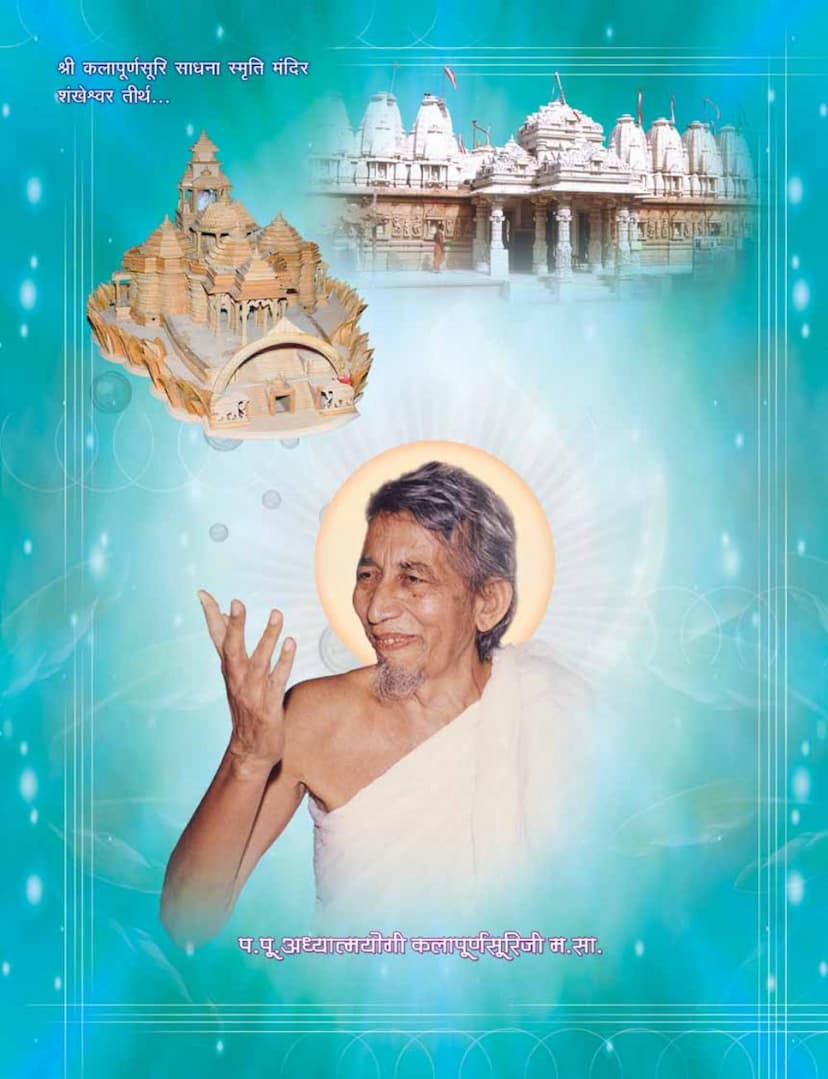Narki Chitravali
Added to library: September 2, 2025

Summary
Here's a comprehensive summary of the Jain text "Narki Chitravali" by Vimalprabhvijay, based on the provided pages:
Title: Narki Chitravali (Picturization of Hell) Author: Vimalprabhvijay Publisher: Vimalprabhvijayji
Overall Purpose: "Narki Chitravali" is a Jain text that vividly illustrates the consequences of negative actions and behaviors, primarily by depicting the suffering and torment faced by individuals in hellish realms (Nark). The book serves as a powerful deterrent, warning readers against engaging in sinful deeds and encouraging them to follow the path of righteousness, self-control, and spiritual liberation according to Jain principles.
Key Themes and Content:
The book is structured as a visual and descriptive catalog of the various sins that lead to rebirth in hell and the specific punishments associated with them. Each "Narki Chitravali" (picturization of hell) typically describes a particular sin and the corresponding torment in the hellish realms.
Here's a breakdown of the sins and punishments depicted across the pages:
1. Adulteration, Deception, and Dishonesty:
- Trading Malpractices: Giving less than what is paid for, displaying superior goods but delivering inferior ones, charging more for inferior goods.
- Financial Fraud: Manipulating account books to cheat the poor and helpless, misappropriating religious property.
- Deceiving Traders: Purchasing goods by deceiving the shopkeeper.
- Cheating: Cheating gullible people through hypocrisy.
2. Violence and Cruelty:
- Abuse of Power: Oppressing servants, causing intrigues and quarrels, hurting self-respect, oppressing others on gaining power.
- Harm to Living Beings: Killing innocent animals (butchers, fish and poultry traders), cutting green trees and destroying plant life, trapping birds, piercing and slaughtering animals, sterilizing cattle, causing abortions, tormenting serpents, crushing small insects.
- Physical Assault: Physically assaulting husbands, attacking one's own people with vengeance.
- Harm to Family: Abusing and neglecting parents, considering parents as fools and hurting their self-respect.
3. Lust and Sensual Indulgences:
- Sexual Immorality: Indulging in prostitution, being engrossed in sexual talks, sexual relations with others' women, shameless indulgence in sex and sensual pleasures, lustful glances.
- Sensual Acts: Cheating with lustful intentions, performing shameless gestures.
4. Negative Speech and Behavior:
- Glib Talk and Deception: Serving preceptors through glib talks and worldly cravings, criticizing others, slandering, betraying, back-biting.
- Quarrels and Conflicts: Picking quarrels with others, causing fights.
- Pride and Arrogance: Becoming intoxicated by power and pride.
5. Greed and Hoarding:
- Accumulation of Wealth: Hoarding grain in large quantities.
- Materialistic Desires: Greed for wealth, land, and women, leading to conflict.
6. Irreligious and Unethical Practices:
- False Beliefs: Liking and listening to false scriptures.
- Hindering Religious Acts: Not giving alms and preventing others from doing so.
- Destruction of Life: Using germicides, burning women alive, eating at night.
- Addiction: Indulging in gambling, drinking intoxicating beverages.
7. Specific Professions and Their Sins:
- Goldsmiths: Kindling their fire works and swindling.
- Traders: Engaging in malpractices and cheating.
- Oil-Expellers and Grinders: Crushing oilseeds, operating water-drawing wheels and grinders.
- Hunters: Killing birds with nets, hunting.
8. Consequences and Punishments: The book consistently emphasizes that these actions lead to rebirth in hellish realms, where individuals experience extreme suffering. While specific torments are often implied or described through the "picturization" aspect, common themes include:
- Extreme Heat and Cold: Suffering from burning furnaces and freezing conditions.
- Physical Torture: Being pierced, cut, thrown, crushed, and subjected to various forms of physical agony.
- Mental Anguish: Experiencing fear, regret, and the torment of witnessing the suffering of others.
- The River Vaitarni: A river full of bloody impurities where sinners are thrown.
- Continued Vendetta: The enmity carried from earthly life persists even in hell.
9. Warnings Against Modern Vices: The later pages extend the warning to contemporary sins, including:
- Smoking and Drugs: Highlighted as leading to death and ruining both this life and the next.
- Television: Depicted as a "great time-killer" that negatively influences the minds of children and leads to sinful thoughts.
- Consumption of Eggs: Stated to contain life and therefore killing them is a sin.
Author's Dedication and Tone: Page 2 reveals a deeply personal dedication from Vimalprabhvijayji to his parents, expressing immense gratitude for their sacrifices and blessings, particularly for permitting his spiritual journey. This personal touch suggests a devotional and earnest intent behind the creation of the book. The overall tone is one of serious warning and moral instruction, aiming to guide individuals towards a righteous life.
In essence, "Narki Chitravali" is a visual and textual guide to the moral consequences of actions in Jainism. It details a wide spectrum of sins, from minor deceits to acts of extreme violence and indulgence, and graphically portrays the hellish consequences, urging readers to cultivate virtuous conduct, practice non-violence (Ahimsa), truthfulness (Satya), non-stealing (Asteya), chastity (Brahmacharya), and non-possession (Aparigraha) to achieve spiritual liberation.